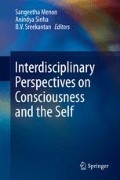Abstract
The geometrical interpretation of brain function by Pellionisz and Llinás and subsequent developments by Roy and Llinás help us to understand brain function in an integrated way. It was originally based on the assumption that the relationship between the brain and the external world is determined by the ability of the central nervous system (CNS) to construct an internal model of the world accomplished through the interactive relationship between sensory and motor expression. In this model the evolutionary realm provides the backbone for the development of an internal functional geometry. The approach henceforth named tensor network theory is sufficiently rich to allow specific computational modelling and addressed the issue of prediction, based on Taylor series expansion properties of the system, at the neuronal level, as a basic property of brain function. It was actually proposed that the evolutionary realm is the backbone for the development of an internal functional space that, while being purely representational, can interact successfully with the totally different world of the so-called external reality. Representationalism and realism have been widely discussed in Indian philosophy including Buddhist framework.
The representations of the internal world and its connection to consciousness associated to functional geometry or sense-dependent geometry will be discussed in this work. Then the epistemological issues will be analysed and compared with those discussed in Indian philosophy. The introduction of functional geometry raises a profound question whether functional geometry is necessary only for the description of the internal world or both internal and external world. The present author along with Ralph Abraham constructed a continuous space–time geometry starting from a discrete evolving cellular network at the smallest level of the physical universe, i.e. at the level of Planck scale. The imminent question is to find a relationship between the functional geometry associated to CNS and at the macroscopic level in the outside world. This will shed new light on the epistemological issues related to nature of consciousness and the validity of physical laws.
Access this chapter
Tax calculation will be finalised at checkout
Purchases are for personal use only
References
Abraham, R., & Roy, S. (2010). Demystifying the Akasha: Consciousness and the quantum vacuum. Rhinebeck, NY: Epigraph Books.
Balslev, A. N. (1983). A study of time in Indian philosophy. Delhi: Motilal Banarsidass Publishers Pvt. Ltd.
Bandyopadhaya, N. (1959). The Buddhist theory of relation between Pramaa and Pramaana. Indian Journal of Philosophy, 7, 41–78.
Kazantsev, V. B. (2003). Olivo-Cerebellar cluster based universal control system. Proceedings of the National Academy of Sciences of the United States of America, 100, 13064–13068.
Kazantsev, V. B., et al. (2004). Self-referential phase reset based on inferior olive oscillator dynamics. Proceedings of the National Academy of Sciences of the United States of America, 101, 18183–18188.
Leznik, E., Makarenko, V., & Llinás, R. (2002). Electrotonically, mediated oscillatory patterns in neuronal ensembles: An in vitro voltage-dependent dye imaging study in the inferior olive. Journal of Neuroscience, 22(7), 2804–2815.
Llinás, R. (2002). I of the vortex: From Neurons to Self, The MIT press, Cambridge Massachusetts.
Llinás, R., & Roy, S. (2009). The ‘prediction imperative’ as the basis for self-awareness. Philosophical Transaction of the Royal Society B, 364, 1301–1307.
Mach, E. (1959). The analysis of sensations. New York: Dover Publications Inc.
Makarenko, V., & Llinás, R. (1998). Experimentally determined chaotic phase synchronization in a neuronal system. Proceedings of the National Academy of Sciences of the United States of America, 95, 15747–15752.
Paul, W. (2000). The reflexive nature of awareness: A Tibetan Madhhyamaka defence. Delhi: Motilal Banarsidass Publishers Pvt. Ltd.
Pellionisz, A., & Llinás, R. (1979). Brain modeling by tensor network theory and computer simulation. The cerebellum: Distributed processor for predictive coordination. Neuroscience, 4, 323–348.
Pellionisz, A., & Llinás, R. (1982). Space-time representation in the brain: The cerebellum as a predictive space-time metric tensor. Neuroscience, 7, 2949–2970.
Pellionisz, A., & Llinás, R. (1985). Tensor network theory of the metaorganization of functional geometries in the CNS. Neuroscience, 16, 245–273.
Ridderbos Katina. (2002). Time. Cambridge: Cambridge University Press.
Roy, S. (2003). Planck scale physics, pregeometry and the notion of time. In R. Buccheri, M. Saniga, & W. M. Stucky (Eds.), The nature of time: Geometry, physics and perception. Dordrecht/Boston/London: Kluwer Academic Publishers.
Roy, S., & Llinás, R. (2008). Dynamic geometry, brain function modeling, and consciousness. In R. Banerjee & B. K. Chakrabarti (Eds.), Progress in brain research (Vol. 168, pp. 133–144). New York: Elsevier.
Roy, S., & Llinas, R. (2012). Metric tensor as degree of coherence in the dynamical organization of the central nervous system. In M. Deza, M. Petitjean, & K. Markov (Eds.), Mathematics of distances and applications (pp. 174–180). Sofia: The Scientific Council of the Institute of Information Theories and Applications FOI ITHEA.
Author information
Authors and Affiliations
Corresponding author
Editor information
Editors and Affiliations
Rights and permissions
Copyright information
© 2014 Springer India
About this chapter
Cite this chapter
Roy, S. (2014). Consciousness, Functional Geometry and Internal Representation. In: Menon, S., Sinha, A., Sreekantan, B. (eds) Interdisciplinary Perspectives on Consciousness and the Self. Springer, New Delhi. https://doi.org/10.1007/978-81-322-1587-5_22
Download citation
DOI: https://doi.org/10.1007/978-81-322-1587-5_22
Published:
Publisher Name: Springer, New Delhi
Print ISBN: 978-81-322-1586-8
Online ISBN: 978-81-322-1587-5
eBook Packages: Humanities, Social Sciences and LawPhilosophy and Religion (R0)

